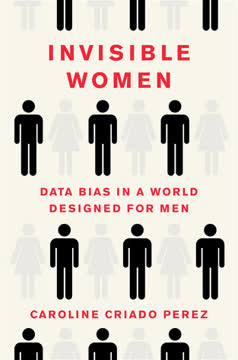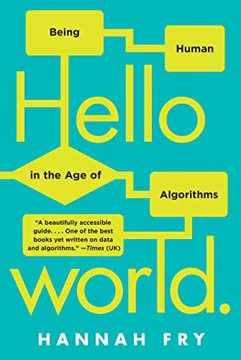Key Takeaways
1. Tech goggles distort urban challenges into technology problems
Through a process that I call the "tech goggles cycle," tech goggles warp behaviors, priorities, and policies according to the logic of technology.
Tech goggles create tunnel vision. This perspective causes people to perceive every urban issue as a technology problem with a technological solution. It leads to the development and adoption of "smart" technologies aimed at making cities more efficient, while overlooking alternative goals and visions not grounded in technology. As municipalities and residents adopt these technologies, their behaviors and policies are shaped by the assumptions embedded in them, further reinforcing the tech goggles perspective. This cyclical process entrenches a technocentric worldview that becomes harder to challenge over time.
Dangers of tech-centric thinking:
- Oversimplifies complex social and political issues
- Ignores non-technological solutions and reforms
- Embeds potentially biased assumptions into urban systems
- Prioritizes efficiency over other important values
- Reduces democratic input on urban priorities
2. Smart city solutions often oversimplify complex urban issues
Simplistic conceptions of social and political challenges always accompany tech goggles.
Reductionist approaches fail. Smart city proponents often present technological solutions as simple fixes to complex urban problems. However, this overlooks the intricate social, political, and economic factors at play. For example, self-driving cars are touted as a cure for traffic congestion, but this ignores induced demand, land use patterns, and the needs of pedestrians and public transit. Similarly, predictive policing algorithms claim to objectively prevent crime, but fail to address underlying socioeconomic causes or potential racial biases in the data.
Pitfalls of oversimplification:
- Neglects root causes of urban challenges
- Produces unintended negative consequences
- Diverts resources from more holistic solutions
- Exacerbates existing inequalities
- Creates a false sense of progress
3. Civic engagement requires more than just efficient technology
Viewing democracy through tech goggles, people overestimate the impact of technology and ignore the complex social and political factors that shape civic engagement.
Technology alone can't fix democracy. Many smart city initiatives aim to increase civic participation through apps, online platforms, and efficient service delivery. However, true engagement requires more than just lowering technological barriers. Meaningful civic involvement stems from community organizing, coalition building, and developing people's capacity for activism and leadership. Simply making it easier to report potholes or vote online does not address core issues of political power imbalances or citizen apathy.
Keys to meaningful civic engagement:
- Focus on transformational organizing, not just transactional interactions
- Build community relationships and social capital
- Develop citizens' political efficacy and leadership skills
- Address systemic barriers to participation (e.g. poverty, discrimination)
- Create opportunities for substantive input on policy decisions
4. Predictive policing algorithms can perpetuate racial biases
Thus, even if a machine learning algorithm is not hard-coded to exhibit racial bias, the data from which it learns reflects social and institutional biases.
Algorithms absorb societal prejudices. Predictive policing tools claim to objectively identify crime hot spots, but they often rely on historically biased policing data. This can lead to over-policing of minority neighborhoods and under-policing of white areas, perpetuating existing racial disparities in the criminal justice system. Moreover, focusing solely on prediction ignores root causes of crime and alternative approaches to public safety.
Problems with predictive policing:
- Reinforces discriminatory practices
- Lacks transparency and accountability
- Ignores socioeconomic factors contributing to crime
- Diverts resources from community-based solutions
- Creates self-fulfilling prophecies of criminality
5. Data collection in smart cities threatens privacy and equity
Smart city technologies make it easier than ever for municipalities to identify and track individuals.
Pervasive surveillance raises concerns. The proliferation of sensors, cameras, and tracking technologies in smart cities enables unprecedented data collection on residents' movements and behaviors. This creates risks of privacy violations, data breaches, and algorithmic discrimination. Low-income and minority communities often bear the brunt of surveillance while having the least ability to opt out. The data collected can be used to make consequential decisions about individuals without their knowledge or consent.
Risks of ubiquitous urban data collection:
- Erosion of privacy in public spaces
- Potential for abuse by government or corporations
- Chilling effect on free expression and association
- Exacerbation of existing inequalities
- Lack of meaningful consent or opt-out options
6. Municipal innovation stems from policy reform, not just technology
Smart Enough Cities create their most significant impacts through policy and process reforms that thoughtfully address local needs. Technology can make these reforms more effective, but it is never the driving force.
True innovation is multifaceted. While smart city initiatives often focus on deploying cutting-edge technologies, the most impactful urban innovations typically stem from policy and institutional reforms. For example, addressing homelessness requires restructuring social services and housing policies, not just better data analytics. Technology can support and enhance these reforms, but it should not be seen as a silver bullet solution to complex urban challenges.
Components of effective municipal innovation:
- Policy changes aligned with community needs and values
- Institutional reforms to improve governance
- Cross-sector collaboration and partnerships
- Capacity building for city staff and residents
- Strategic deployment of technology to support broader goals
7. The "Smart Enough City" balances technology with human needs
Smart Enough Cities must take off their tech goggles and abandon unrealistic and utopian visions of AVs. It is only by recognizing a technology's limits and dangers that we can hope to attain its benefits.
A more holistic urban vision. The Smart Enough City concept advocates for a balanced approach that leverages technology to address genuine urban needs while avoiding techno-utopianism. It recognizes that technology is a tool to support broader social and policy goals, not an end in itself. This approach prioritizes human-centered design, community input, and careful consideration of potential negative impacts.
Principles of the Smart Enough City:
- Focus on solving real problems for real people
- Engage communities in technology decision-making
- Consider social and ethical implications of new technologies
- Prioritize equity and inclusion in smart city initiatives
- Maintain flexibility to adapt as needs and technologies evolve
8. Thoughtful data governance is crucial for responsible smart cities
Municipal implementation of algorithms thus raises grave concerns for urban democracy: cities typically provide the public with little or no insight into how their algorithms were developed or how they work.
Data stewardship is a key responsibility. As cities collect and utilize more data, they must develop robust governance frameworks to ensure responsible use. This includes policies for data privacy, security, transparency, and algorithmic accountability. Cities should engage the public in developing these policies and provide mechanisms for oversight and redress. Without proper governance, smart city technologies risk exacerbating inequalities and eroding public trust.
Elements of responsible data governance:
- Clear policies on data collection, use, and sharing
- Privacy impact assessments for new technologies
- Algorithmic audits for fairness and transparency
- Public engagement in data policy development
- Mechanisms for individual data rights and redress
9. Participatory processes should guide smart city development
Smart Enough Cities should follow what I call the "limited tech test." When considering the use of a new technology, city leaders should ask the following questions: If it were possible to achieve the same outcomes without technology, would it still be innovative? Would the impacts be desirable?
Community input is essential. Smart city initiatives should be guided by participatory processes that engage diverse stakeholders in setting priorities, assessing potential impacts, and making decisions. This helps ensure that technologies address genuine community needs and align with local values. Participatory budgeting, community advisory boards, and public consultations are some ways to incorporate resident input into smart city planning.
Benefits of participatory smart city development:
- Aligns technology with community needs and values
- Builds public trust and buy-in for initiatives
- Identifies potential negative impacts early
- Leverages local knowledge and creativity
- Promotes more equitable distribution of benefits
10. Historical urban planning mistakes offer lessons for smart cities
From prenatal healthcare in Columbus to participatory budgeting in Vallejo to proactive social services in Johnson County to the surveillance ordinance in Seattle to data drills in New York City, we have seen numerous ingredients for creating Smart Enough Cities.
Learn from past errors. The history of urban planning is filled with well-intentioned interventions that produced unintended negative consequences. From the destructive urban renewal projects of the mid-20th century to the car-centric designs that hollowed out city centers, these mistakes offer cautionary tales for smart city development. By studying these historical examples, we can avoid repeating similar errors with new technologies.
Lessons from urban planning history:
- Beware of top-down, one-size-fits-all solutions
- Consider long-term and indirect impacts of interventions
- Prioritize human-scale, livable environments
- Engage communities in planning processes
- Maintain flexibility to adapt to changing needs over time
Last updated:
FAQ
What's The Smart Enough City about?
- Focus on Technology and Cities: The book examines the impact of technology on urban governance and life, critiquing the "smart city" concept that often prioritizes technology over social needs.
- Balanced Approach Advocacy: Author Ben Green introduces the "Smart Enough City" concept, advocating for technology as a tool to support social goals rather than an end in itself.
- Real-World Examples: It includes case studies from various cities, showcasing both successful and problematic uses of technology in urban settings.
Why should I read The Smart Enough City?
- Critical Perspective: The book challenges the prevailing smart city narrative, encouraging readers to critically assess the role of technology in urban environments.
- Framework for Urban Planning: Green offers a framework for responsibly and equitably leveraging technology in cities, relevant for officials, planners, and activists.
- Engaging and Accessible: Written in an engaging style, it is accessible to a general audience while providing in-depth analysis of urban technology issues.
What are the key takeaways of The Smart Enough City?
- Technology is Not a Panacea: While technology can enhance urban life, it is not a cure-all and can exacerbate inequalities if over-relied upon.
- Human-Centric Design Importance: Green advocates for prioritizing residents' needs and values in urban technology design, encouraging holistic thinking.
- Democratic Engagement Need: The book stresses involving citizens in technology and governance discussions to achieve equitable and just outcomes.
What are the best quotes from The Smart Enough City and what do they mean?
- “The smart city threatens...”: This quote warns against prioritizing technology over human needs, emphasizing the need for balance in urban planning.
- “The way in which [a] problem is conceived...”: It highlights the importance of correctly framing urban issues, as this influences the solutions considered.
- “We must take off our tech goggles...”: A call to critically assess technology's role in cities and advocate for thoughtful, inclusive approaches.
How does Ben Green define a "Smart Enough City"?
- Balanced Technology Use: A "Smart Enough City" uses technology thoughtfully, prioritizing social goals over mere technological advancement.
- Community Needs Focus: It emphasizes understanding urban life's complexities and addressing diverse community needs holistically.
- Framework for Development: Green provides a framework for aligning technological initiatives with broader social and political objectives.
What is the concept of "tech goggles" in The Smart Enough City?
- Definition of Tech Goggles: "Tech goggles" describe a mindset that views urban problems as technical challenges solvable by technology alone.
- Consequences of Tech Goggles: This perspective can lead to simplistic solutions that overlook social complexities and exacerbate inequalities.
- Call for Critical Thinking: Green urges readers to recognize and question tech-driven assumptions, essential for equitable urban policies.
How does The Smart Enough City address the issue of equity in urban technology?
- Equity as a Central Theme: The book emphasizes using technology to promote social equity, prioritizing marginalized communities' needs.
- Highlighting Inequities: Case studies illustrate how technology can benefit affluent areas while neglecting poorer ones, underscoring intentional design needs.
- Framework for Inclusivity: Green proposes assessing technological initiatives through an equity lens, encouraging community collaboration to identify needs.
How does The Smart Enough City propose cities should use technology?
- Technology as a Tool: Green argues for viewing technology as a means to achieve broader social goals, not an end in itself.
- Integration with Policies: The book advocates integrating technology with social policies to enhance effectiveness and support human-centered solutions.
- Community Engagement: Emphasizes involving community members in technology decisions to ensure equitable outcomes and public good service.
What are the implications of predictive policing discussed in The Smart Enough City?
- Bias in Predictive Policing: Predictive policing algorithms can perpetuate biases in crime data, leading to discriminatory practices.
- Alternative Approaches Need: Green suggests rethinking policing roles and exploring methods like mental health and community support for just outcomes.
- Transparency and Accountability: The book stresses transparency in algorithm development and use, with public oversight to mitigate risks.
How does The Smart Enough City address the issue of surveillance?
- Surveillance Oversight Ordinance: Discusses Seattle's ordinance requiring public meetings and approval before acquiring surveillance technology.
- Critique of Opaque Technologies: Green critiques unchecked data collection, arguing for clear guidelines and oversight.
- Balancing Security and Privacy: Emphasizes that while surveillance can enhance safety, it must protect individual rights and democratic values.
What role does public engagement play in the Smart Enough City model?
- Essential for Trust: Public engagement builds trust between officials and residents, fostering ownership and accountability.
- Informing Policy Decisions: Engaging the public helps leaders understand community needs, informing policy decisions.
- Empowering Communities: Encourages active resident participation in shaping urban environments, leading to equitable governance.
What are the potential risks of pursuing a "smart city" agenda?
- Loss of Privacy: Increased surveillance and data collection can infringe on privacy rights without public oversight.
- Inequitable Outcomes: Smart city initiatives may exacerbate inequalities if they prioritize efficiency over equity.
- Erosion of Democratic Processes: A technology focus can undermine democratic decision-making, resulting in a lack of accountability and transparency.
Review Summary
The Smart Enough City receives mostly positive reviews, with readers praising its critical examination of technology in urban planning. Many appreciate the book's emphasis on human-centered approaches and its critique of tech-centric solutions. Reviewers find the case studies and examples informative, though some note repetition in the writing. The book is lauded for its balanced perspective on smart city initiatives and its call for more nuanced, policy-driven innovations. Some readers suggest the content could have been condensed, while others find it an essential read for those involved in urban planning and technology.
Similar Books








Download PDF
Download EPUB
.epub digital book format is ideal for reading ebooks on phones, tablets, and e-readers.




